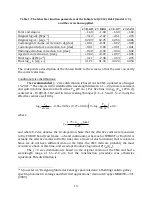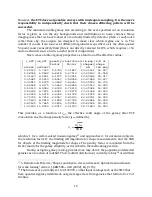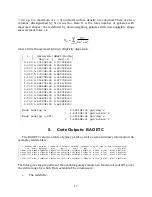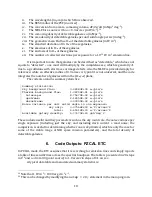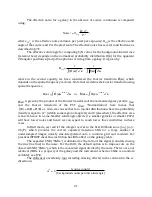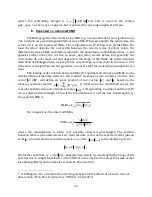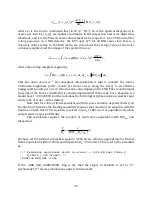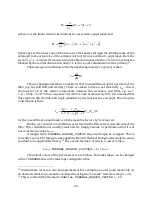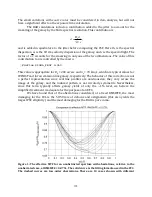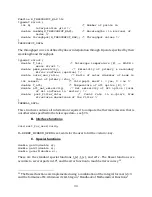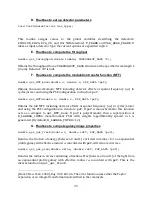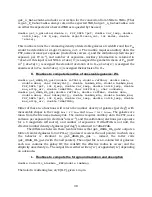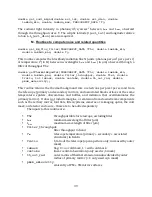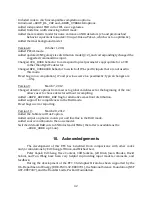
27
G. Thermal background model
Thermal emission from the telescope may be a significant noise contribution for
WFIRST. It can come from several sources, including:
1.
The “telescope” (primary and secondary mirrors and associated structures).
2.
Additional optics upstream of the filter, such as the tertiary mirror and fold flats;
and
3.
Other components, such as the detector enclosure, cold mask, etc., as well as the
filter and any optical components downstream of the filter.
Thermal emission from components upstream of the filter (items 1 and 2 of this list) is
suppressed by the filter transmission curve. The ETC computes thermal emission from
each source in
e
−
/pix/s, and then adds them up.
The telescope is modeled as a single thermal zone with temperature
T
tel
. The
starting point for the computation is the flux of photons
F
bb
(units: photons μm
−2
s
−1
sr
−1
)
from a blackbody observed through the throughput + quantum efficiency curve of the
optics + detector Thr(λ).
33
This is given by the usual blackbody formula
€
F
bb
(
T
)
=
2
c
λ
4
(
e
hc
/
kT
λ
−
1)
Thr(
λ
)
d
λ
λ
min
λ
max
∫
.
If the telescope looked into a blackbody at temperature
T
tel
, and one neglected emission
from all optics downstream of the secondary, then there would be a consequent flux of
detected photons per pixel per second per steradian given by
€
dI
d
Ω
=
T
filter
F
bb
(
T
tel
)
Δ
2
(1
−
ε
)
2
,
where
T
filter
is the filter transmission in band, Δ is the physical pixel scale (in μm; this is
equal to
P
times the effective focal length), and ε is the mirror emissivity. The factor of
(1−ε)
2
is in practice a minor contribution but is in principle necessary since in the
aforementioned situation there is blackbody radiation emerging from the secondary
mirror, but the net throughput curve through which it is seen is larger than Thr(λ) by this
factor.
Finally, one desires the effective emissivity-‐weighted solid angle for which this
emission applies. The effective emissivity is taken as 1 for rays that emerge from “black”
components such as baffles, and is 2ε−ε
2
for rays that emerge from the sky and bounce off
both mirrors. For an ideal circular aperture the solid angle would be π/(4
f
2
), where
f
is the
effective f/ratio. We thus model the emissivity-‐weighted solid angle for the telescope
emission as
33
The function
get_BB_flux_filter
, which computes
F
, assumes the filter to have
perfect emission in band – we account for the finite in band transmission in the functions
that call
get_BB_flux_filter
.


